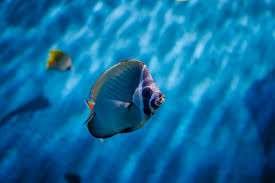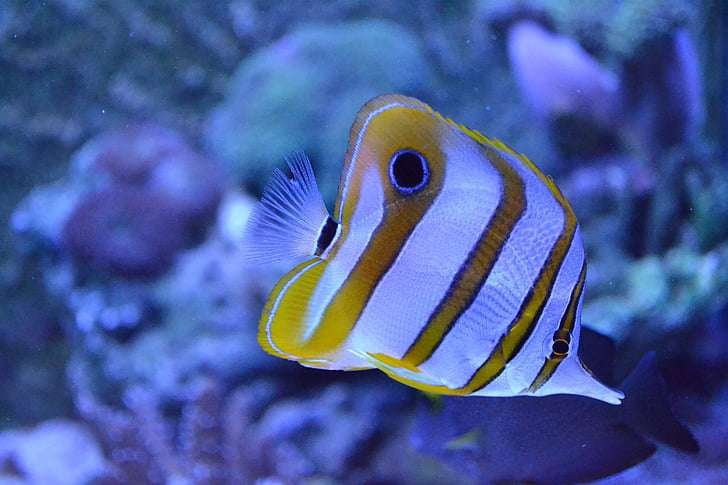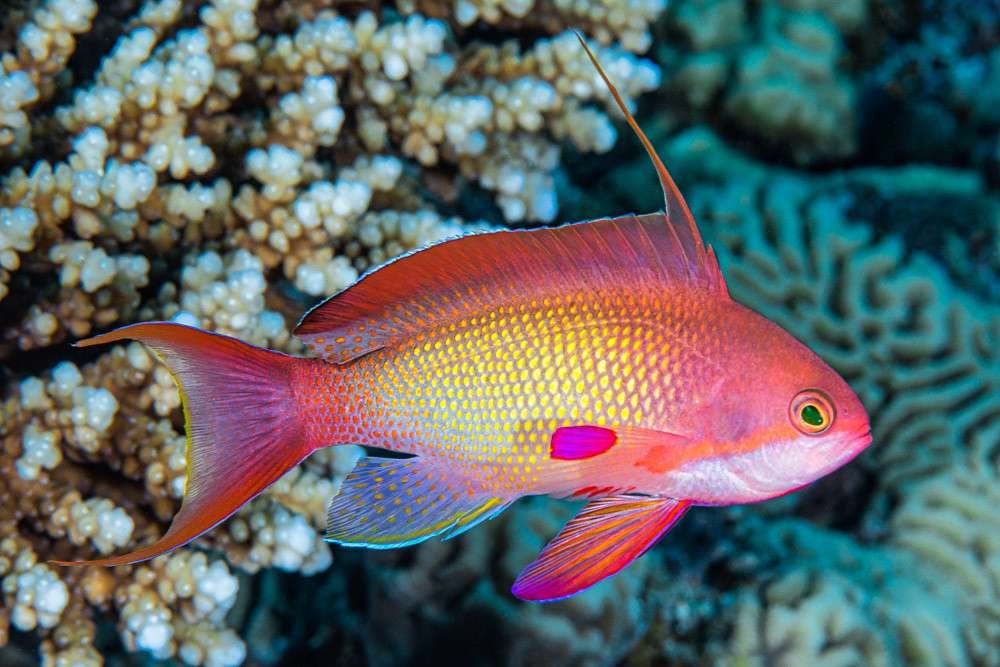Butterfly Fish

There are more than 110 species of butterflyfish in the family Chaetodontidae. They are one of the most well-known reef fish in the water. Papahānaumokuākea Marine National Monument found a new type of deep-reef butterflyfish in 2016. It is called Pete Basabe’s Butterflyfish (Prognathodes basabei). This finding shows how diverse coral reefs are and how much we don’t know about the ocean. Butterflyfish are popular in the tank trade because they are brightly colored and have interesting designs.
Butterflyfish are small when they are fully grown—about the size of a teacup. They can grow to be four to twelve inches long. Like their genetic cousins, angelfish, they have thin bodies that are made like disks. On their scales, they generally have a mix of bright colors and darker bands that are arranged in different ways. Their bright colors fade at night so they fit in with the reef’s dark areas. This helps them stay hidden. Snorkelers and divers like them because of their color, shape, and large numbers on reefs.
Scientists think that the dark spots on the sides and near the tails of many species of butterflyfish may be fake eyes that help keep predators away, especially ones that bite the fish’s fins. They have sharp lips with teeth that look like brushes near the front of their bodies. They also have a single dorsal fin made up of spines and rays that run along their backs and tail fins that run along their sides and are about half the length of their bodies. In most types of butterflyfish, the males and females are the same size and color.
Diet and Habits
Butterflyfish mostly live in reefs, but some also live in seagrass beds, mud flats, and areas near bays with salty water. They usually stay in water that is warm, temperate, or tropical around the world, and they don’t go deeper than 60 feet. But there are also some species that live in deep water. Butterflyfish live in most of the world’s oceans, from the Pacific near Australia and Asia to the Atlantic near North and South America and the islands in the Caribbean. These fish live in the US, from the Carolinas to Florida, and along the Gulf of Mexico. Many national marine reserves have butterflyfish species. These include American Samoa, the Florida Keys, Flower Garden Banks, and the Hawaiian Islands Humpback Whale and Marine National Monuments, which include Papahānaumokuākea and Rose Atoll.
Butterflyfish eat during the day and usually swim in pairs or small groups. Their eyesight is very good, which helps them find food, and when they find food, they use visuals to let their fellow animals know. Butterflyfish feed on small invertebrates, polychaete worms, and even sponges that can hide in cracks and holes in the ocean floor. They do this with their strong teeth. Fish, sea grass, and coral polyps are just a few of the things that some species eat. The form and function of each butterflyfish species’ jaws depend on what they eat. Their shorter jaws help them cut tissue off of a coral polyp, and their longer, thinner jaws help them pull animals out from inside their holes. Butterflyfish are thought to have developed with other animals in their communities and are very important to keeping their home healthy. They keep algae from suffocating coral, keep the number of invertebrates in check, make room for new growth, and get rid of sponges and corals’ dead or dying tissue.
History of Life

Butterflyfish usually live for more than three years. The females lay the most eggs in late winter, early spring, and even very early summer. The eggs hatch in less than two days. Before they become adults around the age of one, when they also become sexually mature, juveniles go through several stages of development and change shape during each one.
Butterflyfish are monogamous, which means they find a mate and stay with that person for life. They have babies by spawning, which means releasing eggs and sperm into the water stream so that they can fertilize each other. This often happens at dusk during the breeding season. Once they are fertilized, the eggs are carried by the currents of the water and may hatch if the conditions are right and they are not eaten along the way. Kids and adults may swim in small groups, but most of the time they swim alone until they find a mate. These fish are very protective of their territory, and scientists don’t know much about how they mate.
Conservation and Threats
It is illegal to hunt butterflyfish for sport or for profit, but they are very famous in the aquarium trade and are often caught by mistake as “bycatch.” At least five species of butterflyfish are in danger of going extinct right now, and other species are having to change to survive in an ocean that is changing quickly. This is because of the bad effects of climate change, including reef damage, ocean acidity, shoreline growth, and more people visiting reefs for fun. All of these things put a lot of stress on butterflyfish numbers and the places where they live. Also, it’s important to note that conservation rules do not currently offer any extra rights for this family of fish.


